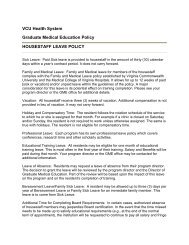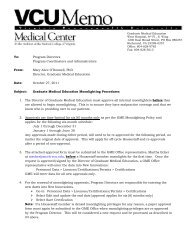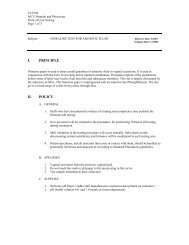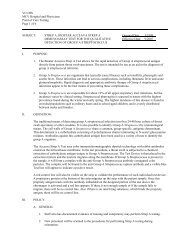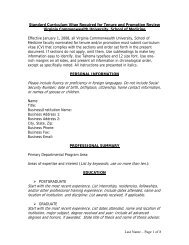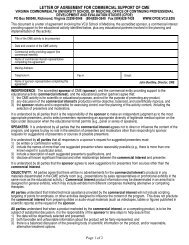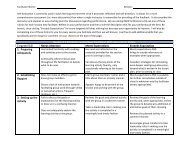Excellence Everywhere - National University of Ireland, Galway
Excellence Everywhere - National University of Ireland, Galway
Excellence Everywhere - National University of Ireland, Galway
- No tags were found...
You also want an ePaper? Increase the reach of your titles
YUMPU automatically turns print PDFs into web optimized ePapers that Google loves.
they know this person and what his or her reputationis. The head <strong>of</strong> a laboratory considering takingon a new research direction may consult with thehead <strong>of</strong> the research institute or other colleagues.But the decision ultimately rests on the shoulders<strong>of</strong> the laboratory head. Do not let those you consultbelieve that they have control <strong>of</strong> your decision.Making a decision with the groupThis decision style is helpful when you have fewtime constraints, need the buy-in or technicalexperience <strong>of</strong> the group, or need a creativeresponse. It is more time-consuming than the twodiscussed above, but in some cases it improvesthe quality <strong>of</strong> the decision. For example, whendeciding whether or not to invite an individual tojoin your lab, you may decide jointly with existinglab members. Another example is if you haveto decide whether or not to buy a new piece <strong>of</strong>equipment you have little experience with. Theremay be other scientists working in your lab whoare more knowledgeable and can make a betterdecision on which particular model to buy. It doesnot diminish your authority to say to a trustedsubordinate, “Since you are the one who will bethe most involved in running this machine, get theone that suits you best.”Passing the decision on to othersThis happens in cases when the decision is moreimportant to other people in the lab, or when youhave little competence in the area or other morepressing priorities. The most important thing toconsider in this case is that you will have to livewith the decision, whether you like it or not. Thelast thing you want to do is overturn a decisiononce it has been made. For example, you might leta senior scientist training in your laboratory decideon his or her own whether to collaborate withanother scientist or where to submit a paper, ifyou believe that the trainee has good judgmentand enough experience to make a mature,informed decision.Setting andCommunicating Rules<strong>of</strong> Behavior for Members<strong>of</strong> Your LaboratoryA key element <strong>of</strong> your role as a lab leader is toeffectively convey expectations that reflect yourvision for the lab. Some expectations may apply toa particular group <strong>of</strong> lab members (e.g., postdocs);others may be unique to each individual. You mightbe formal about stating your expectations, or youmay want to work with your lab members to setthese expectations. This can increase the likelihood<strong>of</strong> buy-in and help increase motivation. Thebest way to communicate expectations is to conveythem continually—at the first interview, on the firstday on the job, at lunchtime if you eat with yourgroup, during lab meetings, and, most importantly,by setting a good example yourself day by day.It is also a good idea to communicate in writingyour expectations about everything from expectedwork hours to dress code to how one gains accessto training opportunities and advancement. Havingthese standards written down is especially goodfor new lab members and will be useful when youare conducting periodic performance reviews. Asa general rule, you should live by the expectationsyou set for your lab members. Show your workersthat you enjoy what you are doing. Especially inthe early years, be present in the lab, working sideby side with them if your position still includesbench work, or showing interest in their work ifyour role is more administrative. They will be ableto see how you work and what is important to you.Below are some general areas you will want toconsider when setting expectations for people inyour lab.Work hoursSome heads <strong>of</strong> laboratories feel they should stipulatea specific number <strong>of</strong> hours per week that theyexpect people in their lab, especially trainees, towork. But that strategy does not necessarily workwell and can generate resentment if the hours62 excellence everywhere



